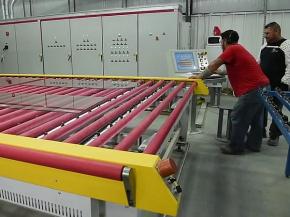Latest articles
| Visual defects, in particular haze, in glass and façade technologies can significantly impact the aesthetic quality and human experience of daylight and views in buildings.
| The latest Glastory blog gives insights on the experiences of the tempering process Autopilot users.
| Investigations of different positions of the sphere and the satellite and their effect on stress distribution are studied. Both, experimental observations and computational FEM simulations are compared.
| This article explores the various aspects of PVB Preparation, handling, and assembly. It explains how to store, transport, and handle PVB in order to ensure optimal performance and adhesion.
| Industry demand for impeccable glass quality has increased notably over the last years. Customer expectations run high, forcing glass processors to strive for ever-stricter quality control and ensure minimal rejection rates for finished products.
| The most common quality issues that arise in tempered glass are roller waves, glass distortion, bad anisotropy and white haze. In this post, we want to focus on white haze and ways to control it.
| This paper was first presented at GPD 2019 by Louis Moreau from AGNORA, Canada.
| In a glass tempering process, residual stresses to glass are made with heat treatment. The process includes heating and cooling, and they should be equal on both sides of the glass pane.
| Following a short overview outlining key design objectives, the fabrication process of an opaque composite glass panel is described in detail.
| In the last years contentions about anisotropies among customers and manufacturers occurred when using glass products, such as heat-strengthened (HS) or fully tempered glass (FT).
| Safety standards are constantly rising in all possible areas in which glass is used or installed – which is the reason why lamination is also becoming increasingly important in the glass industry.
| A couple of years ago all started with the first measurement of anisotropies and edge stress as well as the detection of White Haze and other glass imperfections right after the furnace.
| Learn about the first step we take in maintaining tempered glass quality standards.
| Glass industry standards in different countries require 24/7 quality control with the same specifications and fully automated analyses and following statistics.














